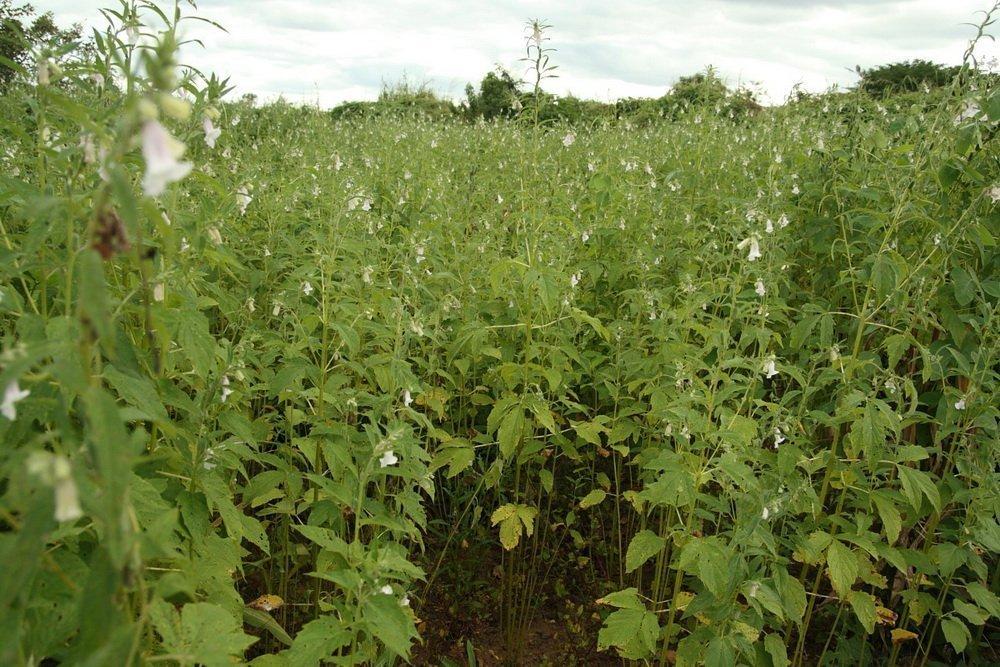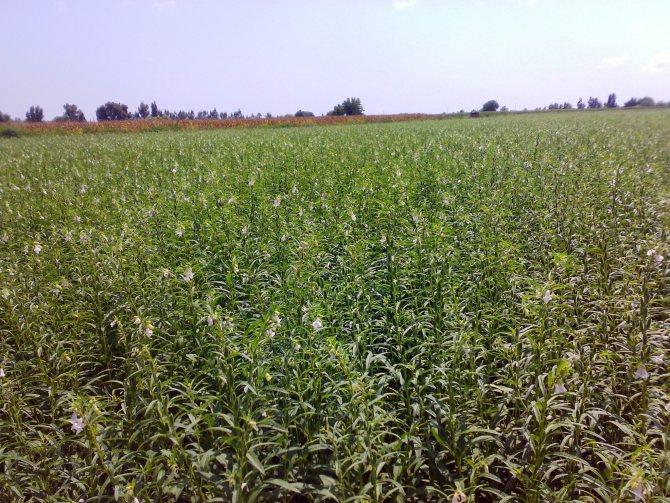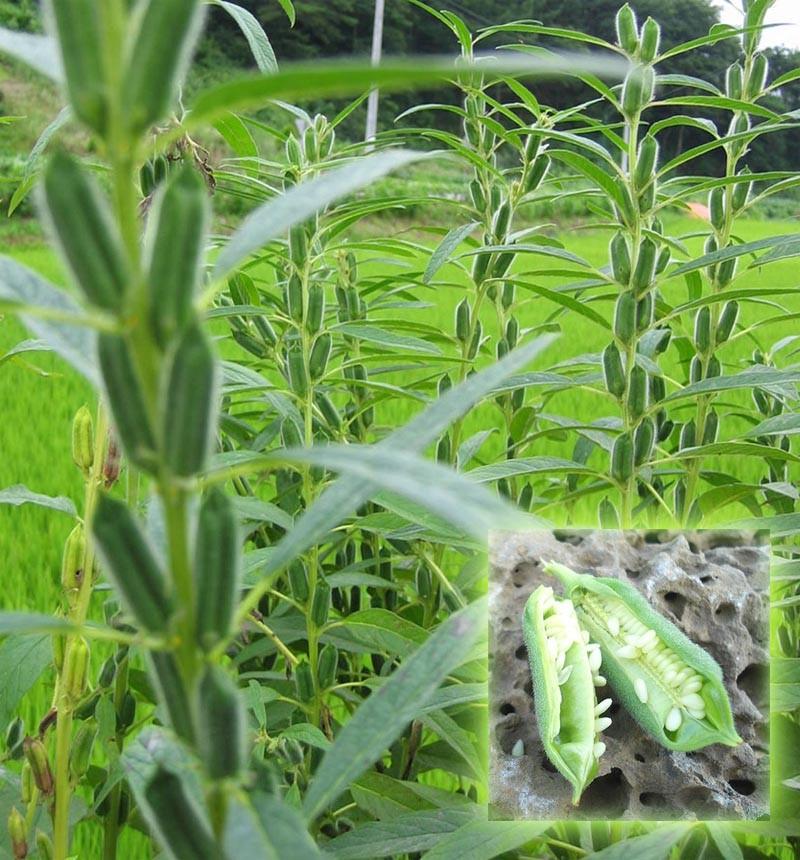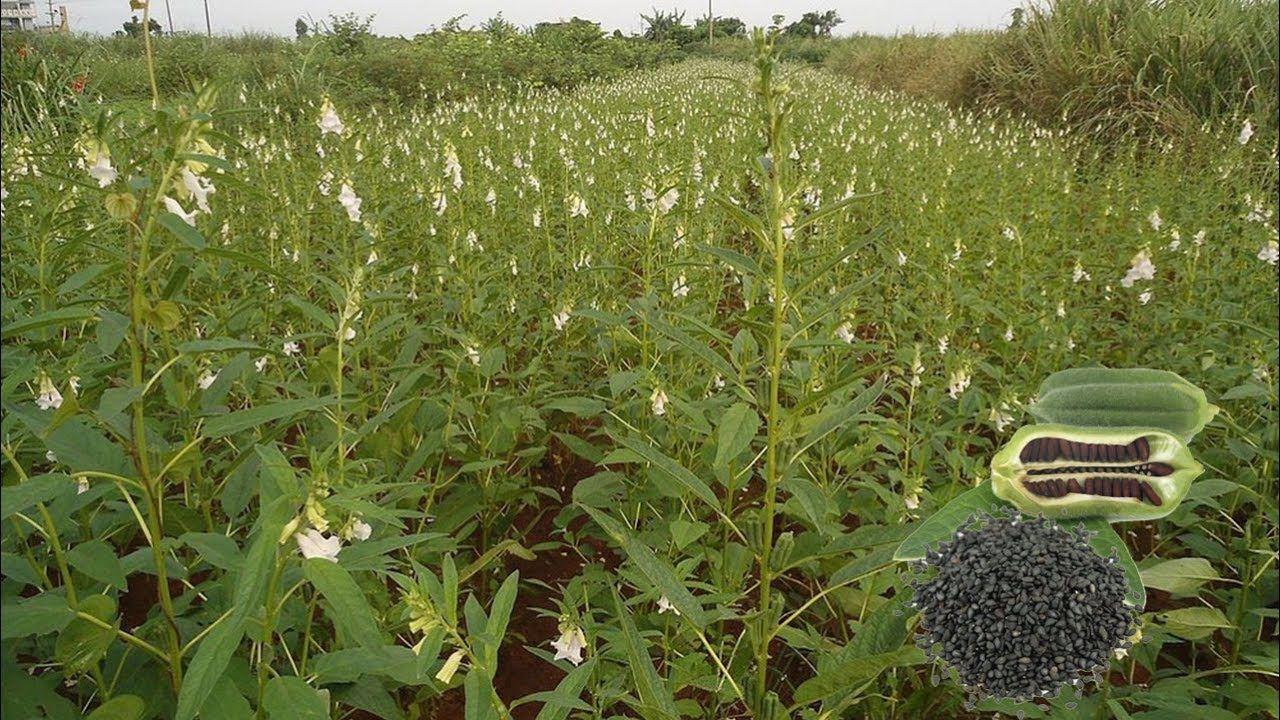Sesame is a plant that is grown in various parts of the world and is used in cooking, cosmetics, medicine and even in industry. Its popularity has only increased over time due to its taste, nutritional properties and numerous health benefits. Let us consider in detail some interesting facts about it, and also tell you how to properly grow this plant and what benefits you can get from it.
Description of sesame seeds
Sesame seeds are a food product that is obtained from the mature seeds of a plant also known as sesame. This product is used to add to dishes to add deep flavor and aroma.
The seeds are rich in fatty oils, proteins and minerals such as magnesium, iron, calcium and phosphorus. The composition also includes B vitamins, vitamin E and other antioxidants. In addition, they contain linoleic acid, which is considered a beneficial fatty acid for the body.
The seeds can be used either fresh or roasted. They have a delicate nutty flavor and crunchy texture. They can be added to salads, sauces, casseroles and baked goods. They are also often used in Asian cuisine to make sauces and marinades.
They are also an important source of dietary fiber, which helps maintain a healthy digestive process. They may also help lower blood cholesterol and improve bone health.
Can be stored in a dark and dry place for 4 months. Before use, it is recommended to fry the seeds in a dry frying pan to highlight their aroma and taste.
Chemical elements of sesame
This grain crop is a source of nutrients. The plant contains various chemical elements that have a positive effect on human health.
One of the main elements contained in sesame is calcium. It is essential for healthy bones and teeth, and also helps in maintaining normal blood pressure and muscle and nerve function. The plant contains a significant amount of calcium, so it is an excellent product for those who care about bone health.
The culture is also rich in magnesium, which regulates blood sugar levels, improves the functioning of the cardiovascular system, helps cope with stress and improves sleep quality. Due to its high magnesium content, sesame can be an excellent product for people suffering from diabetes or problems with the cardiovascular system.
In addition, the plant contains vitamin E, which is a powerful antioxidant. Vitamin E helps protect the body's cells from free radicals that can cause cell and tissue damage. It helps maintain healthy skin and improves immune system function.
Sesame also contains many other beneficial elements such as manganese, phosphorus, copper, zinc and many others.
Useful and harmful properties
The most obvious use of sesame is in cooking. Sesame oil, obtained from the seeds, is used for cooking in many cuisines around the world. Sesame seeds are used as a seasoning for meat dishes, salads and sauces. They are also suitable for making traditional sweets.
However, you should not overuse the seeds because of their high calorie content. 100 grams contain about 570 calories, so consume them in moderation to avoid becoming overweight.
Some people may also experience allergic reactions to sesame. If you have an allergy, you should not use it to avoid anaphylactic shock or other negative reactions of the body.
The plant contains small amounts of oxalates, which can cause problems in people prone to developing kidney stones.Therefore, if you have problems with these organs, discuss sesame consumption with your doctor.
Overall, consuming sesame in moderation may provide health benefits due to its nutritional properties, but be careful when consuming it.
The seeds are also used in cosmetics. They contain vitamin E, which helps improve skin condition, and omega-3 fatty acids, which reduce inflammation. The oil is used as an ingredient in many cosmetics such as creams, masks and lotions.
Sesame also has many medicinal properties. In traditional medicine, the oil is used to treat skin diseases, strengthen the immune system and improve digestion. The seeds may also help control cholesterol and blood pressure.
In addition, sesame is used in religious and cultural rituals. In India, for example, seeds are used in rituals and as a decorative element in jewelry. In Japan, sesame is used to make costumes for theatrical performances and festivals.
Black and white sesame - the difference
Unlike white sesame, which undergoes a peeling procedure, black sesame is left in its natural shell, which makes it more nutritious and rich.
The black variety has a more intense taste and smell than the white variety. It also contains higher amounts of fatty acids, protein, calcium and other nutrients than white. White, on the other hand, is milder and more delicate in taste and is commonly used in cooking for sweet dishes.
Both varieties have health benefits such as improving digestion, lowering blood cholesterol, lowering blood pressure and boosting immunity. In addition, they may also help reduce the risk of developing heart disease and diabetes.
However, consumption of the black variety may have some restrictions for people suffering from certain diseases such as kidney stones, gastritis, peptic ulcers and seed allergies. Therefore, before consuming black or white sesame as a food product, you should consult a doctor or nutritionist.
Nuances of planting and growing
This crop grows in tropical and subtropical regions of the world. It is known for its small, round seeds, which can be used in cooking and cosmetics. However, few people know what the plant looks like and how it grows.
Sesame belongs to the plantain family and can grow from 60 cm to 1 m in height. It has small green leaves that are about 3 cm long. The plant begins to bloom in its first year, during the summer period, and can continue to bloom for many years.
Sesame is grown from seeds that are sown in the soil. They should be placed at a depth of 2 cm and at a distance of 10-15 cm from each other. The plant needs warmth and sun, so it is best to grow it in a warm climate. It also needs well-drained soil and regular watering.
With proper care, sesame can grow up to 1 m in height in one season.Moreover, it can be grown on your own plot even without gardening experience. To obtain a harvest, it is important to properly prepare the soil and plant sesame seeds on time.
How to plant correctly
It is important to follow 4 steps here.
- Step 1. Selecting a landing site. Before you start planting sesame, you need to choose a place to grow it. He prefers sunny places with a well-thought-out drainage system. Therefore, choose a place in the area where there is enough sunlight and where water does not linger long after rains.
- Step 2. Preparing the soil. It requires well-drained soil rich in nutrients. Before sowing, water the soil and remove all weeds. Then add organic fertilizers such as humus or compost to the soil. Loosen the soil to a depth of 15-20 cm.
- Step 3. Sowing. Sesame can be grown from seeds. You can buy them in a store or online. The black and white look look the same but differ in size. Black seeds are smaller than white ones. Before sowing, soak them in warm water for several hours. This will help speed up germination. Then sow to a depth of 1-2 cm, keeping a distance of 10-15 cm between them. After sowing, fill the soil.
- Step 4. Further care of the planted plant. Sesame does not require special care, but requires sufficient moisture. Water the plant regularly, especially during dry summer climates. Do not allow the soil to dry out, but also avoid stagnation. Hill up seedlings to retain moisture in the soil. If necessary, you can use fertilizers to increase yield.
How to grow properly
Growing sesame can be a fairly simple process, but there are a few things to consider to ensure you get the best quality harvest. First, for planting you should choose a sunny place, protected from the wind. Secondly, the crop needs a drainage system, so the soil should be prepared and enriched with compost or humus before planting.
If you are going to grow sesame from seeds, then you need to soak them in water for a couple of hours so that they swell and germinate better. After this, it is worth planting to a depth of 1.5-2 cm, keeping a distance of 15-20 cm between them.
One of the nuances that needs to be taken into account when growing sesame is frequent watering. Sesame loves moisture, especially during growth and flowering. However, too much moisture can cause the roots to rot, so it's important to keep the soil moist but not too wet. Watering should be done regularly, especially on hot summer days.
In addition, mineral fertilizers such as nitrogen, phosphorus and potassium can be used for better growth. But you should not overdo it with fertilizers, so as not to overload the plant and damage the roots.
Finally, it is important to note that sesame is highly resistant to diseases and pests, making it ideal for growing even at home. However, if you do not follow the conditions for caring for the plant, it can become a victim of various diseases and pests. Some of the most common diseases of sesame include late blight, gray mold and rust.
Interesting Facts
Sesame is a grain crop that has been used in cooking and medicine for many millennia. Despite the fact that this product is widely distributed throughout the world, few people know some important facts about it.
- Origin of the name.The name "sesame" comes from the Sanskrit word "tila", which means "small". This is because sesame seeds are really very small.
- Sesame is one of the oldest known crops. The seeds were grown in India and China more than 5,000 years ago. They were widespread in Egypt, Greece and Rome and played an important role in medicine and religious ceremonies.
- The plant contains high levels of iron. 100 grams of seeds contain 14 mg of iron. This makes them beneficial for those suffering from iron deficiency anemia.
- It is one of the richest sources of calcium. 100 grams of sesame contain 975 mg of calcium. This makes it a valuable product for those suffering from osteoporosis.
- 100 grams of sesame contain 350 mg of magnesium.
- Is a natural antioxidant. The seeds contain antioxidants that help protect cells from free radicals and prevent premature aging.
- This is an excellent source of protein. 100 grams contain 18 grams of protein. This makes sesame a valuable product for those who monitor their health and play sports.


















